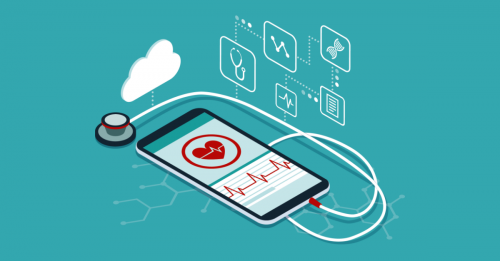Paper on new governance procedures for medical devices in Italy
 On March 22, 2019, the Italian Ministry of Health published a document outlining the new governance procedures for medical devices that the Government intends to implement in Italy. These procedures concern the efficient allocation of the Italian National Health Service’s (“NHS”) resources, sustainable innovation, strengthening of market surveillance and transparency of the actions and relationships surrounding the procurement and use of medical devices.
On March 22, 2019, the Italian Ministry of Health published a document outlining the new governance procedures for medical devices that the Government intends to implement in Italy. These procedures concern the efficient allocation of the Italian National Health Service’s (“NHS”) resources, sustainable innovation, strengthening of market surveillance and transparency of the actions and relationships surrounding the procurement and use of medical devices.
The document addresses the following main topics:
Roles and competences of the regulatory authorities
- reorganization of competences: without prejudice to the direction and supervisory functions of the Italian Ministry of Health, a reorganization of the overall governance of the sector is necessary to improve coordination and to overcome the current overlaps of competences between the regulatory authorities;
- independent information activities on the use of medical devices: it is necessary to discontinue exclusive relationships between the manufacturers/distributors of medical devices and individual professionals/health facilities. A plan of independent information activities for professionals and patients should be prepared on the appropriate use of medical devices and large equipment;
Management of health expenditure for medical devices
- reorganization of the medical devices classification system: the list of medical devices on the market is currently available from the Data Base (BD) and the Medical Devices Repertory (RDM) kept by the Italian Ministry of Health, for all medical devices and for medical devices sold only to the NHS, respectively. It is advisable to reorganize the two archives into one single database, providing for the manufacturer’s obligation to enter the relevant data and information and to quash the confidentiality restrictions;
- definition of homogeneous product clusters: the classification must be able to allow for the homogeneous grouping of marketable products by function and intended use, with the purpose of identifying the reference price. Product clusters will represent the reference lots for all contracting authorities and the option to make further segmentations which negatively affect the competition will have to be justified;
- improvement of the centralized purchasing processes: centralized purchasing processes need to be strengthened, the list and categories of medical devices that can be purchased have been expanded, and buyers shall be encouraged to use the tenders in progress; the identification of a new product cluster and/or the recognition by the NHS of a higher purchase price compared to the alternative products available can be attributed only to devices for which the clinical or welfare value is shown in terms of relevant clinical outcomes and/or processes;
- role of expenditure ceilings: thanks to the actions described above, it is expected that the cost ceiling and pay-back mechanisms in the event of exceeding the expenditure ceiling will gradually become a residual tool for controlling expenditure for medical devices;
Surveillance and control
- market surveillance and control of serious accidents: it is necessary to initiate a market surveillance system consistent with the indications of the new European Regulation, which emphasizes the need to ensure the availability of adequate resources. The surveillance system must consider the outcomes of the control activities, the results of inspections and the reports from other Member States, manufacturers and healthcare professionals. While control occurs following the reporting of serious incidents and in monitoring the effects of the corrective safety actions put in place, the task of surveillance is to analyze the reports, prevent potential accidents and ensure an audit plan;
- compensation system for damages: it is necessary to establish a method of compensation in the event of accidents and malfunctions that give rise to an intensification of patient follow-up or the need for explanations and re-implantations or that, in any case, involve additional costs for the NHS;
Health Technology Assessment (HTA)
- consistent implementation of the HTA: in order for the HTA to be functional to the governance of medical devices and to plan investments in large equipment, it is necessary to go beyond the discretionary approach used to identify the technologies to be evaluated, establishing that the HTA shall apply to all health technologies that present innovative action mechanisms and that are considered to have a high clinical, economic, organizational and welfare impact, or that present high risks for patients or are at particular risk of inappropriate use. The systematic and methodologically vigorous evaluations, conducted in compliance with the obligations of transparency, absence of conflicts of interest and publicizing the evaluation process, must provide conclusions in a reliable manner and in accordance with the decision-making needs of the NHS. Before proceeding with the acquisition of products that are to be considered ‘innovative’, the contracting authorities shall await the HTA evaluation carried out at national level and, only in the case of purchases that cannot be postponed, shall require a HTA evaluation at the regional level, in accordance with the procedures established by the National HTA Program of Medical Devices;
- introduction of “innovative” medical devices into the NHS: if the manufacturer believes that its product is not homogeneous with respect to other products already on the market, regarding the innovative characteristics and discontinuity with the existing products, the decision concerning the product’s entry into the NHS is preceded by a technical-scientific comparative evaluation, which is necessary to demonstrate the additional clinical value of the new product. The evaluation, carried out according to international HTA best practices, is based on: the analysis of comparative efficacy and safety data with respect to what is currently in use, the estimate of the requirement and the expected consumption volumes and the examination of costs with respect to the extent and relevance of the additional benefits of the technology.
